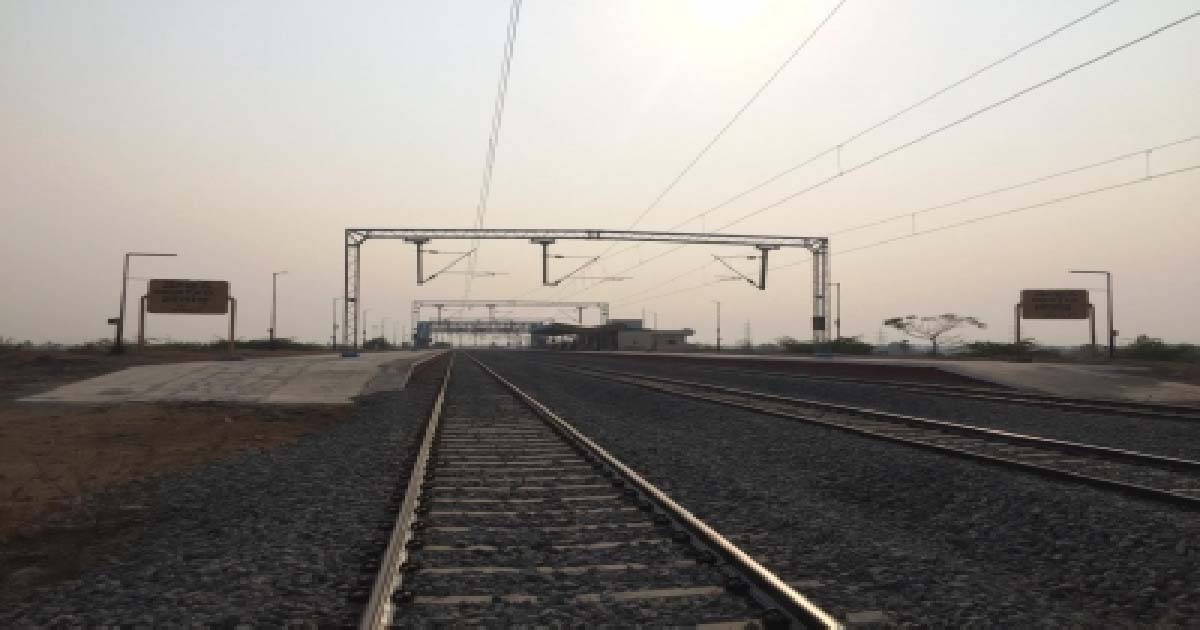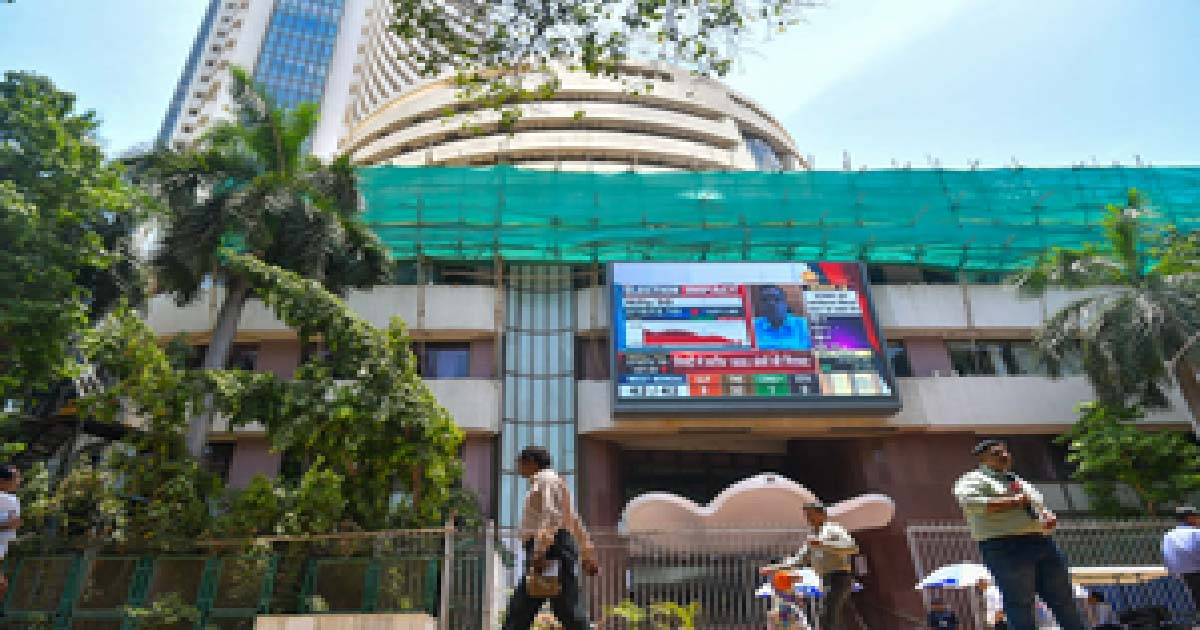Business
How ECHO India is building capacities via AWS Cloud to touch 400 million lives

With a goal to touch 400 million lives in India by end 2025, New Delhi-based non-profit organisation ECHO India is working towards building capacities across areas such as healthcare, education and other sustainable development goals.
ECHO India (Extension for Community Healthcare Outcomes), along with its partners, has launched over 200 hubs and rolled out more than 350 programmes covering more than 30 disease areas, which has led to the capacity building of over 700,000 healthcare providers across the country.
Kartik Dhar, Head Technology & Digital Platforms at ECHO India, told IANS in an interview that Cloud technology is at the heart of all that they do, as it enables them to connect their participants together.
The Covid pandemic created a great sense of urgency for the organisation and access to AWS infrastructure allowed them to build their platform much faster and with greater reliability.
Here are the excerpts from an interview:
Q. What is the vision behind ECHO India?
A: Established in 2008, ECHO India is a non-profit organisation focused on bringing equity primarily in the fields of healthcare and education through capacity building of healthcare practitioners and educators.
We follow the Societal Thinking approach, and are working towards building an open digital infrastructure for capacity building through a community-centred approach, powered by the ECHO’s ‘hub and spoke’ Model of learning; Hub being a group of experts who regularly mentor the learners (spokes).
TeleECHO “clinics” are conducted by ECHO ahubs’ through basic, widely available teleconferencing tools, and the sessions involve primary care clinicians and healthcare workers (HCWs) from multiple sites presenting patient cases to teams of specialists and each other. In this manner, ECHO creates ongoing learning communities to support primary care clinicians and helps them develop necessary skills.
With a goal to touch 400 million lives in India by end of 2025, ECHO India has partnered with the Ministry of Health and Family Welfare (MoHFW), Government of India, State NHMs (National Health Missions), Municipal Corporations, Nursing Councils as well as leading medical institutions across India including AIIMS (All India Institute of Medical Sciences), NIMHANS (National Institute of Mental Health & Neurological Sciences), NITRD (National Institute for Tuberculosis and Respiratory Diseases), NICPR (National Institute of Cancer Prevention & Research), Tata Memorial Hospital, and PGIMER (Post Graduate Institute for Medical Education & Research). ECHO India, along with its partners, has launched over 200 hubs and rolled out 350+ programmes covering more than 30 disease areas, which has led to the capacity building of over 700,000 providers across the country.
Q: What innovations has Echo brought into the non-profit space?
A: The ECHO Model is an innovative learning model that uses case-based learning, guided iterative practice, and tele-mentoring, instead of traditional online and unidirectional learning methodologies like Webinars, Lectures, MOOC (Massive Online Open Courses). Through this practical approach we are able to ensure that health workers have better knowledge retention and practical understanding that they can apply in the field.
We have also developed an innovative Digital Platform called iECHO, — developed in collaboration with Project ECHO USA — that serves as a shared digital infrastructure for the entire global movement. Through this digital platform, participants can connect with experts, take part in live learning sessions, access best practices, get digital certificates, and potentially connect and share knowledge freely and openly.
Q: Tell us about the reach of your work and elaborate on your plans for the next couple of years?
A: We launched more than 80 new hubs during 2021-22, representing a strong YoY growth of over 65 per cent, following on from a massive 160 per cent growth in the year before.
We signed a Memorandum of Understanding (MoU) with the Ministry of Health and Family Welfare to facilitate the use of ECHO Model in MoHFW-linked hospitals, central institutions and national-level programmes.
We also entered into formal partnerships with 25 state NHMs to enable capacity building at primary and secondary care. We expanded outreach to all the North-eastern states, strengthening ECHO’s impact in the country’s hinterland, thus reducing inequities in healthcare access.
In a recent programme, we mentored 5,500 nurses for infection prevention and control in partnership with the Nursing Councils, state NHMs and Municipal Corporations of Mumbai, Nagpur and Kolkata.
We see our role evolving from solving the problem to distributing the ability to solve to our “superhubs”, hubs or sometimes even our participants. Our role is to ensure that in this capacity building and skilling of HCWs, there is fidelity to the ECHO Model, an enabling technology infrastructure, defined standards and proper guidance and support all the participants of the ECHO movement.
iECHO allows hubs to onboard themselves on the ECHO platform faster, helps them build and operate multiple programmes and onboard their spokes too. They can access all the programme data at one place with ways to manage multiple programmes, see details of attendance, get robust data analytics on participation, conduct assessments and issue certification to the participants.
Q: How do you go about addressing Sustainable Development Goals?
A: The ECHO model has proven efficient, effective, and scalable across several disciplines in empowering global change, especially in the fields of health and education. Going beyond health and education, the ECHO model can be leveraged to create lasting change across multiple sectors and achieve Sustainable Development Goals (SDGs) — extending even to Gender Equity and Climate — by empowering stakeholders from relevant fields to think and expand their horizons to achieve a better and more sustainable future for all.
Q. What types of challenges do you face while working and how do you solve them?
A: As a technology enabled non-profit, we are constantly challenged with ensuring our systems are resilient, scalable, and accessible to all. In a resource constrained environment like India, access to fast internet has been challenging, especially as we work in remote areas.
Our goal is to ensure equitable access to all our community participants, and we have taken various initiatives to ensure the ECHO platform is accessible to the last mile.
A constant challenge in software development is the balance of speed and quality. Given that we are trying to solve a massive challenge of touching 1 billion lives, we need to operate at speed, while ensuring that the solutions we develop are robust and scalable to meet the growing needs of the movement.
Q. What are some of the emerging technologies that will further reshape healthcare, education, and livelihood over the next 4-5 years?
A: The upcoming Ayushman Bharat Digital Mission (ABDM) platform by the Ministry of Health & Family Welfare, Government of India, can be a game changer in ensuring equitable access to healthcare for the last mile. By enabling interoperability and digitization, it could potentially transform healthcare in the same way that UPI (Unified Payments Interface) has transformed micropayments in India.
We also are optimistic about the potential of Artificial Intelligence (AI) and Machine Learning (ML) technologies to impact the last mile. We have seen deep learning language models like GPT-3 transform the way humans can interact with computer systems, and we are collaborating with the Societal Platform team towards building platform capabilities that will allow the ECHO community to discover and access knowledge resources seamlessly.
AI-based voice assistant and translation technologies in regional languages of India can also be a game changer towards democratizing access to specialized medical knowledge and expertise to health workers in remote areas who are not comfortable with English.
Q: What has cloud technology and AWS helped you to do that you couldn’t do before?
The ECHO movement is a model which relies on personal touch, mutual respect and connection between the mentor and mentee. The challenge has been not to lose the heart of the model while constructing a digital platform which will enable a huge force-multiplication to the initiative. Cloud technology is now at the heart of all how we propose to expand it exponentially, as it connects our participants together while retaining fidelity to the Model.
Amazon has been a critical part of our journey and a key partner. We are using a whole host of AWS services such as the Elastic Kubernetes Service, Pinpoint for messaging, DynamoDB for a highly scalable NoSQL database, and much more.
The pandemic created a great sense of urgency for us and we needed to develop our platform at rapid speed. Having access to AWS infrastructure has allowed us to build our platform much faster and with greater reliability. This has been critical in the journey of ECHO.
Q. In terms of business outcomes, what benefits have you experienced because of running on AWS?
By leveraging containerization and microservices architecture, specifically through Amazon Elastic Container Registry (ECR) and Amazon CloudWatch, we have improved our infrastructure pipelines dramatically. Through ECR we are able to automate our deployment and ensure we can reliably deploy functionality to our users seamlessly. CloudWatch has given us improved insights into infrastructure telemetry data and has reduced the time for issue resolution significantly.
Amazon Simple Email Service (SES) has provided us with a highly cost effective and scalable solution for sending email communications and notifications to our users. It has provided a low cost and high reliability solution as compared to other vendors.
Having a managed suite of services, especially the database and container registry has allowed us to achieve a lot with a small and lean team.
Not having to hire dedicated Database Administrators or system administrators to manage and maintain the database has allowed us to focus our efforts on maximizing value for our users.
Implementing DynamoDB with auto-scaling and in-memory caching has given us a highly scalable database with zero downtime, while being able to handle millions of requests.
Through our microservice architecture implemented on AWS Cloud we are able to ensure a highly available system with failover protection and auto-scaling to handle high traffic spikes.
Amazon Pinpoint has enabled us to send SMS notifications, One-time passwords (OTP), and other communications very easily, thus allowing our users to easily sign up, get updates, and interact with the ECHO platform using mobile devices.
Having dedicated technical support and communication from our relationship manager has been highly appreciated, and gives us added efficiency, and an extra peace of mind.
Ensuring Cybersecurity and compliance best practices around Identity and Access Management (IAM), separation of development, testing and production environments, while maintaining a highly agile and responsive development workflow has been enabled by AWS.
The “mission” of ECHO India is not to generate revenue. It is to bring equity in Healthcare using this ECHO model. I am very happy that the use of AWS in our digital platform iECHO is enabling us to do that.
Business
38 Railways projects worth Rs 89,780 crore sanctioned in Maharashtra: Centre

New Delhi, Dec 20: A total of 38 railway projects (11 new lines, 2 gauge conversion and 25 doubling) of a total length of 5,098 kms and costing Rs 89,780 crore have been sanctioned in Maharashtra (as on April 1, 2025), the government said on Saturday.
During the last three fiscals — 2022-23, 2023-24, 2024-25 and the current financial year 2025-26 — 98 surveys (29 New Line, 2 Gauge Conversion and 67 Doubling) of total length 8,603 km falling fully/partly in the state of Maharashtra, have been sanctioned, it said.
“Further, construction works on the flagship High-Speed Bullet Train project have gathered momentum in Maharashtra. Now 100 per cent of land acquisition has been completed. Works on bridges, aqueducts, etc. have been taken up,” the Railways Ministry said in a statement.
In addition, platform extension work at 34 stations to accommodate 15-car EMUs has been taken up.
To improve the capacity of the rail network in the Mumbai suburban area, the Mumbai Urban Transport Project (MUTP)-II costing Rs 8,087 crore, MUTP-III costing Rs 10,947 crore, and MUTP-IIIA costing Rs 33,690 crore have been sanctioned.
To enhance passenger carrying capacity, 238 rakes of 12 cars each with doors have been sanctioned under MUTP-III and IIIA at a cost of Rs 19,293 crore. The process for the procurement of these rakes has been taken up.
With Western DFC also passing through Maharashtra, as about 178 route km of it or about 12 per cent of the overall route length, falling in the state, the ministry said that “about 76 km of this project from New Gholvad to New Vaitarna in Maharashtra has already been commissioned. Balance works have been taken up. Connectivity of WDFC to JNPT will boost the capacity to handle cargo and container traffic from the port to Delhi NCR”.
Presently, about 120 originating Mail/Express trains and about 3,200 suburban trains are handled daily in the Mumbai area.
Business
Indian indices end week in bullish tone over positive global cues

Mumbai, Dec 20: Indian equity benchmarks closed on a strong note this week, snapping a four-day losing streak amid positive global cues stemming from US inflation data.
The market ended the week in a bullish tone with Nifty surging 0.18 per cent during the week and 0.58 per cent on the last trading day to 25,966, after a softer US CPI print boosted expectations of a milder Fed stance.
At close, the Sensex was up 447.55 points or 0.53 per cent at 84,929.
Indian equities were traded in a cautious tone for most of the week, weighed down by persistent FII outflows, rupee depreciation, and heightened global uncertainties.
Further, early sessions also saw pressure from rising Japanese bond yields and expectations of Bank of Japan (BoJ) tightening, which amplified risk-off sentiment across emerging markets.
Bargain hunting and lower crude prices helped large caps drive a late rebound, trimming most of the week’s losses, market watchers said.
Broader indices also rose marginally during the week, with the Nifty Midcap100 up 0.04 per cent, while Nifty Smallcap100 was unchanged during the week. It gained 1.34 per cent at the close.
On the sectoral front, all sectors traded with a positive bias. Major contributions came from Nifty Realty, Auto, Healthcare, and Chemicals, while other sectors also posted modest gains.
Nifty has 26,200-26,300 as stiff resistance levels while 25,700–25,800 levels will act as support zone, they added.
Analysts said markets will likely maintain a cautiously positive bias in near future but remain highly sensitive to global cues.
Key drivers going forward include comments from the global central banks for the 2026 policy trajectory. While sentiment remains constructive, near-term volatility may persist amid uncertainty over trade deal timelines and the Indian rupee stability, they added.
Business
Nifty to touch 29,094 in 12 months supported by durable earnings, strong macro backdrop

New Delhi, Dec 19: India’s benchmark index Nifty is expected to touch 29,094 in one year based on long‑term valuation averages and earnings durability, a report said on Friday.
Wealth management firm PL Wealth said in the report that India enters the end of 2025 from a position of relative macro strength with record‑low inflation, a dovish monetary stance, resilient domestic demand and improved corporate earnings visibility.
“In the near term, large-cap stocks remain preferred due to their earnings stability and strong balance sheets, while selective exposure to high-quality mid-cap names is being added as visibility improves,” the wealth management firm cited its strategy.
Over the next 6 to 24 months, the earnings cycle is expected to broaden across consumption, financials, capex-linked sectors and select industrials, supported by benign inflation, lower interest rates and sustained domestic liquidity.
“India’s current macro configuration is among the most constructive we have seen in over a decade,” said Inderbir Singh Jolly, CEO, PL Wealth Management.
While global uncertainties will continue to create short-term volatility, India’s structural strengths—policy reform, financialisaton of savings and improving corporate balance sheets—position it well for sustained long-term growth, Inderbir added.
RBI’s 25 basis‑point cut to a 5.25 per cent policy repo rate lowered its CPI inflation projections and upgraded GDP growth estimates, signalling confidence in the sustainability of domestic demand, the report said.
The firm also noted FY26 GDP growth projection of 7.3 per cent underpinned by robust infrastructure spending, resilient consumption and key policy measures such as GST rationalisation and income-tax cuts.
The FY26 September quarter earnings season delivered broad-based strength, with several sectors—including hospitals, capital goods, cement, electronics manufacturing services, ports, NBFCs and telecom—reporting double-digit growth in EBITDA and profits.
The firm noted that Nifty earnings per share estimates for FY26–FY28 imply an earnings CAGR of nearly 14 per cent. Domestic institutional investors have anchored markets with record net inflows of over Rs 6.8 trillion year‑to‑date.
-

 Crime3 years ago
Crime3 years agoClass 10 student jumps to death in Jaipur
-

 Maharashtra1 year ago
Maharashtra1 year agoMumbai Local Train Update: Central Railway’s New Timetable Comes Into Effect; Check Full List Of Revised Timings & Stations
-

 Maharashtra1 year ago
Maharashtra1 year agoMumbai To Go Toll-Free Tonight! Maharashtra Govt Announces Complete Toll Waiver For Light Motor Vehicles At All 5 Entry Points Of City
-

 Maharashtra1 year ago
Maharashtra1 year agoFalse photo of Imtiaz Jaleel’s rally, exposing the fooling conspiracy
-

 National News1 year ago
National News1 year agoMinistry of Railways rolls out Special Drive 4.0 with focus on digitisation, cleanliness, inclusiveness and grievance redressal
-

 Maharashtra1 year ago
Maharashtra1 year agoMaharashtra Elections 2024: Mumbai Metro & BEST Services Extended Till Midnight On Voting Day
-

 National News1 year ago
National News1 year agoJ&K: 4 Jawans Killed, 28 Injured After Bus Carrying BSF Personnel For Poll Duty Falls Into Gorge In Budgam; Terrifying Visuals Surface
-

 Crime1 year ago
Crime1 year agoBaba Siddique Murder: Mumbai Police Unable To Get Lawrence Bishnoi Custody Due To Home Ministry Order, Says Report












